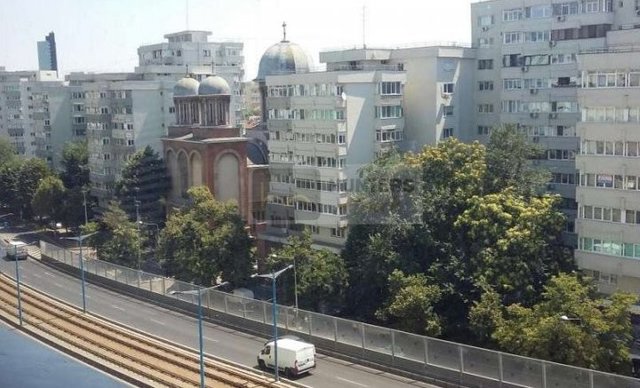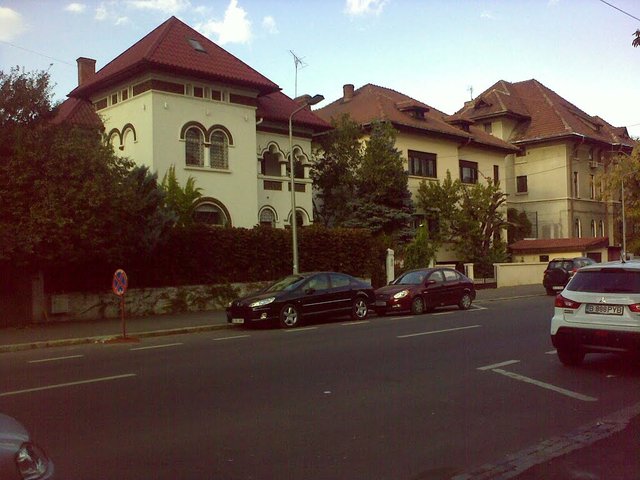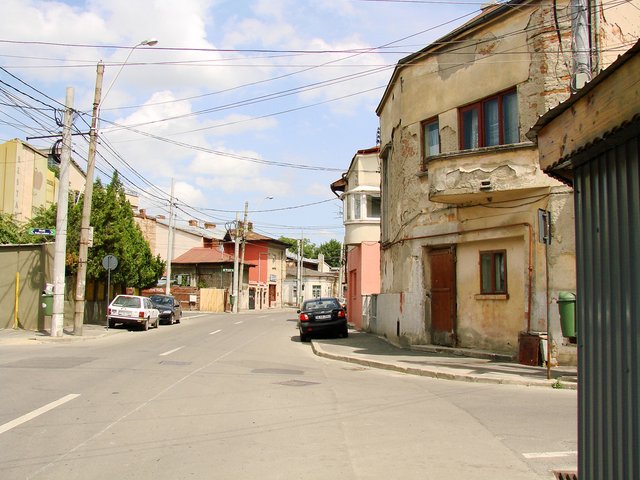Change in Bucharest: A neighbourhood in transition
One thing I find interesting about my neighborhood is it somewhat at the border of several periods of the life of Bucharest. It is liminal. I'm not sure it is fully correct, but I have always wanted to use the word liminal. Strangely steemit spell check dopes not know it. Anyway... Let me expand on that.
While not the oldest city in the world, Bucharest has almost 600 years of history behind it, more than half of it as capital of first Wallachia, and after that smaller and greater Romania. And now the current version of Romania, which is ehm... bigger than small but smaller than big. In the meantime there has been, obviously, a lot of change. The position was not great – it was basically built on a swamp surrounded by dry steppe like plains, and the climate is one of the more extreme of European capitals, with hot summers and cold winter. The wind in summer brings dust, in winter it can cut to the bone.
That aside, while you can see some history in Bucharest, it was so thoroughly changed during communism that not much remain. You do not get the same sense of age like other old cities.

Img
Bucharest was rapidly industrialized and built during communism. The building took the form of hideous brutalist architecture, in endless apartment blocks, crowded, badly insulated, and overall quite unpleasant. These were the houses of the working class, which were supposed to work in the factories and build the glorious multilaterally developed socialist society.
The communist apparatchiks, off course, did not live there. They took over the villas of the previously wealthy or middle class. It is hard work building equality, they deserved a better living standard then the masses. Some animals more equal than others, you see.
The previous rich and middle class were unceremoniously kicked out of their homes, along with many of the poor. Because, besides the party bigwig homes, there needed to be space for the shitty apartment buildings. The proles needed abodes as well. And to do that you needed to tear down the old buildings. Quite indiscriminately.
Now, on to my neighborhood. If you were to build a triangle around my building, on one side is the beginning a wealthy area. This was one of the wealthiest since before communism, where the well of lived in nice and quite large houses on leafy streets. A lot of these were preserved to this day.

Img
On the third side of the triangle is a front-line of communist apartment blocks. The begin like a wall of crowded blocks.
On the third there are the old style, not to fancy houses that the pre-communist lower middle class lived in. These are generally single story or at most a couple of levels. Some still have the look of rural Romanian houses. These were the ones that were to be torn down should the communist dream have continued.
The house I live in is in a 1940 building and just before the revolution it was quite at risk. The apartment buildings were creeping closer; you never knew when it would be decided to tear down this street to build more.
I find in interesting while walking. It is like going from one time period to another, from the 1970s to the 1930s.

Img
Now I have the chance to see what modern society alters. The expensive old villas and the communist blocks will not change any time soon. What is changing is the area of the old not-so-fancy houses that escaped communist building schemes. They are, one by one, bit by bit, torn down and rebuilt. I assume it would also be accurate to say funeral by funeral, as many inhabitants are elderly who do not want to sell the house, or tear it down to rebuild, as they lived their entire life in it. So, mostly after they die, the heirs do something about it. Sell or rebuild or whatever.
The result of the modern building spurt is, to be diplomatic about it, quite eclectic. A lot of houses and building were built in Bucharest in the last 10-15 years, for people who became wealthy enough to escape the communist apartments. The plots of land were generally small and everyone build whatever they felt like, so there is no coherent model. This is good and bad, depending on whether you like uniformity.
Haphazard building lead to a great contrast. Old houses, some up kept some not, with a random new house or small apartment building, stuck in the tiny spaces. The future ... it remains to be seen. Or not, depending on the breaks.
Bravo @ionescur!
Very good post and I must say that I am so happy to see more people talking and writing about Romania!
If I may give you a advice : put olso in the tags the name romania (small letters).
Very soon there will be more romanians here on Steemit and they will search this type of content, a do the same!
Is there any concrete global plan to renew the older parts of the city, I mean the worker's apartment blocks? And to rebuild them using more modern standards?